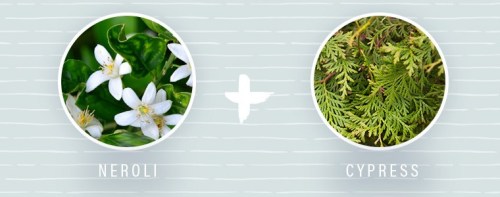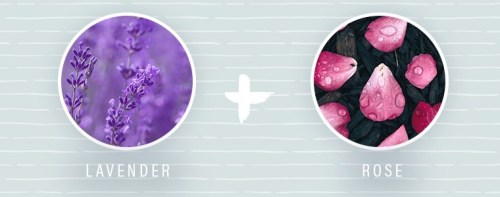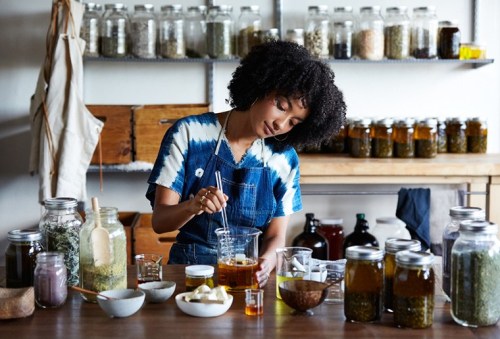Let’s face it—once you get hooked on the mood-boosting, de-stressing powers of essential oils, you just can’t quit them. Suddenly you’re trying to suppress the urge to put a diffuser in every room, so you never have to breathe in air that’s not enhanced by lovely smelling plant extracts (just me?).
The thing is, because there are so many different kinds, it’s hard to choose just one oil to play around with. So chances are you wind up mixing some clashing scents that don’t quite hit the olfactory note you had hoped for (kind of like how the more-is-more theory at the fro-yo bar can leave you with a funky-tasting treat). It’s certainly fun to channel your inner alchemist and mix your own essential oil potions, but, as it turns out, there’s somewhat of a system to it.
“When you mix oils, all sorts of magical things can happen,” says Kimberly Jonas, founder and principle alchemist at BodyMantra. “Various essential oils complement each other and bring out notes that might not otherwise have been sensed if you only used a single oil.”
“When you mix oils, all sorts of magical things can happen.”
While there’s technically no wrong way to blend them, it’s pretty clear when certain ones just don’t match. “Your nose and body will tell you if something isn’t quite right,” notes Jonas. “The blends will smell flat or feel a bit unappetizing.”
Her basic advice is to go with oils that immediately smell enticing. Of course, when all else fails—stick with the pre-made blends (which are pretty reliably delicious anyways).
Keep reading for 5 delicious blends that always work, according to Jonas.

1. Ylang ylang + patchouli
If you’re into earthy scents, Jonas highly recommends this combo. “Ylang ylang has a high, light vibration, while patchouli’s a decidedly more earthy, grounding one,” she says. “It’s very much a yin-yang mix and will cultivate a good balance for body and mind.” Yoga vibes, anyone?

2. Lemon + rosemary
This is a power refresher: “Lemon and rosemary are a power duo for cleansing and clearing, physically and energetically,” notes Jonas. “Lemon’s pleasing notes are complemented perfectly by the stronger, get-down-to-business herbaceous rosemary.” Better yet? Lemon has been shown to help boost your mood while rosemary has been shown to sharpen memory.

3. Angelica + myrrh
Stressed? Overworked and behind on sleep? (Probably not, right?) Either way, Jonas advises to mix the exotic angelica and myrrh to kick back at the end of the day. “These are two other-worldly essential oils that will help you to step away from your to-do list and find some respite,” she says. (Yes, please!)

4. Neroli + cypress
One of the most enchanting scents you often find in perfumes—neroli—meshes well with earthy cypress. “Neroli’s heavenly, floral scent with the decidedly woody qualities of cypress might seem an unlikely couple,” says Jonas. “But this pairing will expand your senses far and wide like no other combo and help you to focus on the bigger picture.” Intriguing to say the least.

5. Lavender + rose
It comes as no surprise that two of the most delicate flowers make for a perfect (and perfectly chill) combination for your nose to experience. “Lavender combined with rose instantly cultivates a sense of calm and grace,” says Jonas. “The simplicity of lavender pairs well with the complex layers of rose essential oil.” Together, the two bring about a peaceful, soothing vibe to your room. BRB, making this blend immediately.
For more essential oil intel, here are the 3 essential oils that *instantly* set the mood. And these are the stress-busting essential oils to take in your carry-on for stress-free travel.
Sign Up for Our Daily Newsletter
Get all the latest in wellness, trends, food, fitness, beauty, and more delivered right to your inbox.
Got it, you've been added to our email list.











